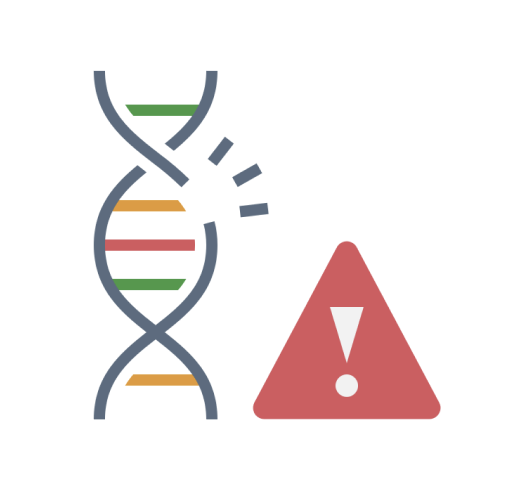ARTIFICIAL SWEETENERS
Note: Not every type of artificial sweetener is covered. Please let us know in “Get Involved” if there is a specific one that you’d like to learn about. It is also important to note that artificial sweeteners should be consumed in moderation.
What: Artificial sweeteners have no calories but are chemicals that provide an extreme level of sweetness.
Click below for topic of choice or scroll.
SUCRALOSE
(Splenda®)
This is a no-calorie sweetener that is 600 times sweeter than table sugar. It also has no impact on blood sugar levels and is permitted to be used in more than 100 countries. The safety of sucralose is confirmed by the U.S. FDA, the European Food Safety Authority, the World Health Organization’s Joint Expert Committee on Food Additives, Japan’s Ministry of Health, Labor, and Welfare, Food Standards Australia New Zealand, and Health Canada.
However, consuming commercially used sucralose—which contains up to 0.67% of sucralose-6-acetate—breaks up DNA in cells that are exposed to the chemical. 0.67% may seem like a small percentage, but additional sucralose-6-acetate is produced after digestion as a byproduct of metabolism. Researchers conducted in vitro experiments exposing human blood cells to sucralose-6-acetate. As a result, Susan Schiffman, corresponding author and adjunct professor at North Carolina State University and University of North Carolina at Chapel Hill, states, “In short, we found that sucralose-6-acetate is genotoxic, and that it effectively broke up DNA in cells that were exposed to the chemical.”

Schiffman additionally states, “We found that gut cells exposed to sucralose-6-acetate had increased activity in genes related to oxidative stress, inflammation and carcinogenicity.” When researchers conducted in vitro experiments exposing tissues that line a human’s gut wall (gut epithelial tissues) to sucralose and sucralose-6-acetate, they found that these chemicals caused “leaky gut.” This means that the walls of the gut are more susceptible to having liquids and gases pass through them. Susan Schiffman states, “A leaky gut is problematic because it means that things that would normally be flushed out of the body in feces are instead leaking out of the gut and being absorbed into the bloodstream.”

The European Food Safety Authority has a daily consumption threshold of 0.15 micrograms of genotoxic substances per person. Schiffman states that traces of sucralose-6-acetate exceed the threshold in a single sucrose-sweetened drink, and this does not even account for the amount of sucralose-6-acetate produced as a byproduct of metabolism after the drink is digested.
SACCHARIN
(Sweet and Low®, Sweet Twin®, Sweet’N Low®, and Necta Sweet®)
This is a no-calorie sweetener that is 200-700 times sweeter than table sugar. It is not recommended for consumption during pregnancy because it is a weak carcinogen that crosses the placenta. It also does not raise blood sugar levels and is permitted to be used in more than 100 countries. The safety of saccharin is confirmed by the U.S. FDA, the European Food Safety Authority, the Joint FAO/WHO Expert Committee on Food Additives, Japan’s Ministry of Health, Labor, and Welfare, Food Standards Australia New Zealand, and Health Canada.
ASPARTAME
(NutraSweet®, Equal®, and Sugar Twin®)
This is a sweetener that is 200 times sweeter than table sugar. Aspartame contains the amino acid phenylalanine and should be avoided by individuals with PKU (a rare metabolic disorder), certain liver diseases, or those pregnant with elevated phenylalanine levels in their blood. While it is often used in pharmaceutical drugs and supplements, it is not commonly used in food. It does not raise blood sugar levels, and its use is permitted by Japan’s Ministry of Health, Labor, and Welfare, Food Standards of Australia New Zealand, Health Canada, and the U.S. FDA.
ACESULFAME POTASSIUM
(Sunett® and Sweet One®)
This is a no-calorie sweetener that is 200 times sweeter than table sugar. When used in a packaged food, it can be labeled as “Ace-K, Acesulfame K, or Acesulfame Potassium.” The safety of acesulfame potassium is confirmed by the European Food Safety Authority, the World Health Organization’s Joint Expert Committee on Food Additives, Japan’s Ministry of Health, Labor, and Welfare, Food Standards Australia New Zealand, and Health Canada.
ADVANTAME
This is a no-calorie sweetener that is 20,000 times sweeter than table sugar. This ingredient was recently approved by the FDA in 2014. Advantame is permitted for use in the U.S., Canada, Europe, Australia, and New Zealand. According to the Center for Science in the Public Interest, the number of mice that survived in an FDA cancer study of advantame was below their own recommendations. CSPI “criticized the FDA’s failure to abide by its own published standards and its dismissal of concerns raised by some of its own scientists.”
NEOTAME
(Newtame®)
This is a no-calorie sweetener that is 8,000 times sweeter than table sugar. It is approved by the U.S. FDA and the European Union, but it is rarely used as an ingredient. The use of neotame is also approved in Australia and New Zealand.